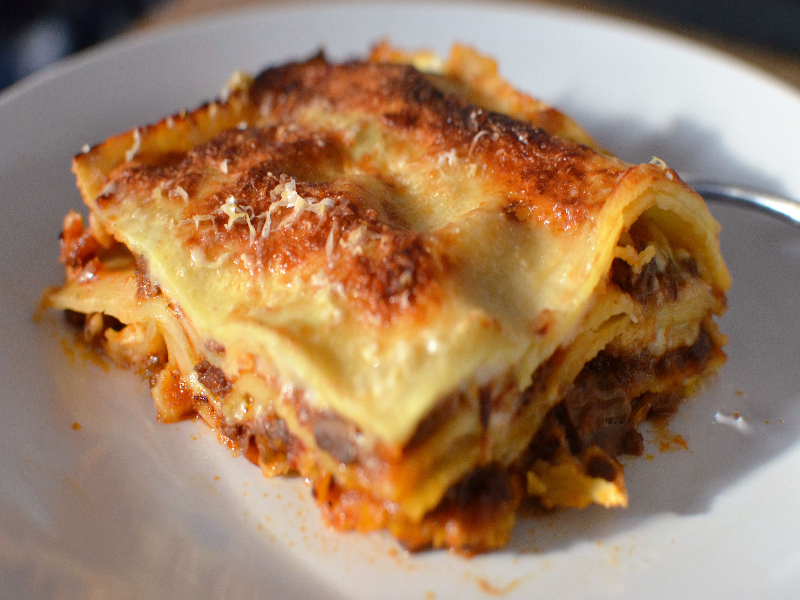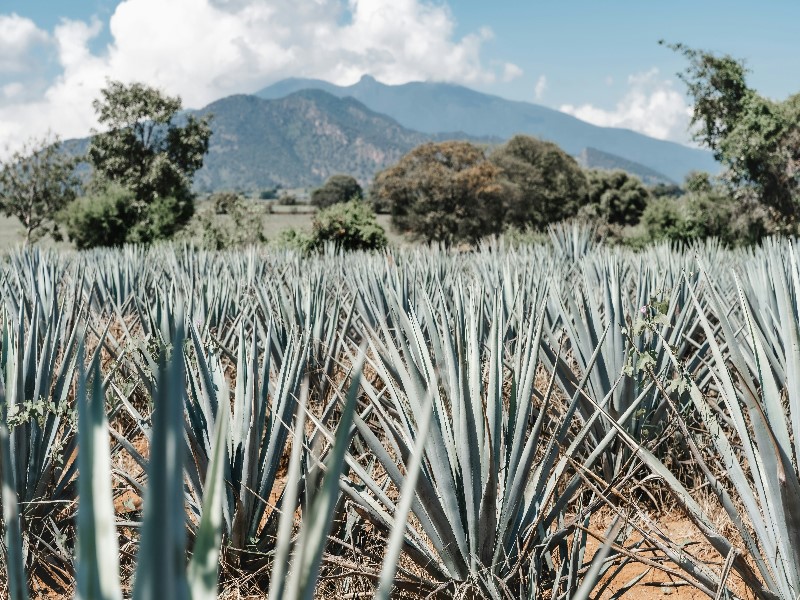
Layers of Yumminess
Layers of ice cream separated by fruits and nuts and the kiss of almond flavor, the homemade spumoni at Caruso’s Italian Restaurant is always a winner and was savored last week as part of Sonoran Restaurant Week.
That got me thinking about, of all things, foods with layers. What is it about those layers? I think it’s the deliciousness that comes from the goodness each layer holds. The fun surprise to the eye and palate. What do you think?
We’re surrounded by them maybe without even realizing it. Oh sure, there’s three-layer to six-layer cakes, lasagna, seven-layer dip and seven-layer salad, and lots of others probably part of your kitchen repertoire.
Wait a minute – they’re everywhere!
According to Italy Magazine, the term “lagana,” already in use in Roman times, referred to square- or rectangular-shaped thin sheets obtained from a mixture of wheat flour, then baked or fire-cooked.
In 1284, Fra’ Salimbene da Parma described a friar eating lasagna, “I’ve never seen anyone stuffing himself on lasagna with cheese so pleasurably and so fully as him.” This hints at the introduction of cheese in the dish. Eggs wouldn’t be in the dough until the Renaissance.
In 1880s Naples, tomatoes make its first appearance. Contemporary layered lasagna is thanks Francesco Zambrini from Bologna, who introduced it in the 19th century.
The traditional lasagna alla bolognese is a first course consisting of layers of thin pasta dough made with flour, egg and spinach. Between each layer are ragù and béchamel sauces. The top layer is lightly sprinkled with Parmigiano-Reggiano cheese, then baked.
The success of Bolognese lasagna is due to some Bologna-based restaurateurs popularizing the use of spinach in the dough at the beginning of the 20th century, and around the same time, use of ragù and béchamel sauces and grated Parmigiano.
As with any traditional dish, there are many recipes and variations. The Accademia Italiana di Cucina (Italian Kitchen Academy), after careful analysis, registered what’s considered the original and traditional recipe at the Chamber of Commerce of Bologna.
Classes
Just one seat left for Tuesday’s For the Love of Meatballs – Italian & Greek Style class with Chris DeSimone.
Carne asada is usually a noun, but on October 11, Felipe Garcia, foodie, cook, blogger and president/CEO of Visit Tucson will teach you it’s also a verb – the experience of bringing people together, storytelling, cooking and the sights and smells of meat grilling, chiles and tomatoes charring for salsa and tortillas warming. You’ll make it three ways: Taco, Lorenza and Caramelo.
After Saturday night’s upset victory of North Dakota State University, don’t you want to cook with two UArizona football legends? You can on October 20 with Coach Ricky and LaMonte Hunley in their Cooking with the Wildcats class. On the menu: Lemon and Wine Marinated Baked Salmon; Bok Choy Salad with Strawberry, Pear, Apple, Jalapeño and Sesame Seeds; Sautéed Spinach; and Key Lime Pie. Oh, talking plenty of football, too.
Biscotti is the perfect cookie for dunking in coffee, tea or wine. A staple of Italian kitchens for generations, on October 22, join Certified Executive Chef and Slow Food Southern Arizona President Barry Infuso for a fun morning preparing this twice-baked treat. You’ll leave with ready-to-bake dough that’ll yield about 10 dozen cookies.
News & Notes
Congratulations to chefs Kelzi Bartholomaei of Mother Hubbard’s Café, Ryan Clark of Casino Del Sol, Wendy Gauthier of Chef Chic, Sarah Lamberth of Noble Hops, Roderick LeDesma of Casino Del Sol, Travis Peters of The Delta and The Parish, and Devon Sanner of Zio Peppe on being named Chef Ambassadors for the Tucson City of Gastronomy. The culinary professionals will collaborate with chefs from sister Cities of Gastronomy, lead cooking demonstrations and represent Tucson abroad.
On October 30, six legends of Tucson cuisine – Carlotta Flores, Jonathan Landeen, Jim “Murph” Murphy, Donna Nordin, Alan Zeman and Janos Wilder – team up with Gastronomic Union of Tucson (GUT) chefs for an unforgettable night benefitting the nonprofit Tucson City of Gastronomy. Stay tuned for ticket details.
Wishing you joy in the kitchen,
Michele
Lasagna alla Bolognese
Yield: 4-6 servings
Note: You can use no-boil lasagna sheet. If making dough, spinach can be omitted.
Pasta & Assembly
2 eggs
230 grams all-purpose flour
30 grams spinach, cooked, well-drained and chopped
½ cup Parmigiano-Reggiano cheese, freshly and finely grated
1. Heap flour onto a cutting or pastry board. Eggs, spinach and salt must be put in the center of the volcano; try to not spread too much the flour. Break eggs into well and mix with a fork, add spinach then start incorporating flour gradually from the edges so eggs don’t slip away.
2. Knead at least 10 minutes. Don’t be afraid to beat and push the dough hard, mash and squeeze it between your hands and when it becomes elastic enough, knead another 5 minutes, putting all your weight on the cutting board, pushing with your chest.
After about 15 minutes of kneading, cover dough with a cloth and let it rest for 1-2 hours at room temperature, away from any possible cold drafts.
3. Once rested, roll out with a rolling pin, hand crank or electric pasta machine until thin. Roll and cut sheets the same size as the baking dish. Bring a large pot of water to a boil and boil 2-3 sheets at a time for 3 minutes, don’t completely cook them!
4. Drain and immediately put them in a bowl of cold salted water, then lay on a towel to dry.
5. Heat oven to 350°F. Grease baking dish with unsalted butter.
6. Create first layer with noodles, abundant ragù sauce, béchamel sauce and Parmesan cheese. Continue for five layers, finishing with béchamel sauce and top with Parmesan cheese. Cover with foil. Bake 10 minutes, then uncover and bake 15 more minutes.
Ragù Sauce
10 oz. coarsely ground beef
5 oz. pancetta, minced
1 ¼ cups peeled crushed tomatoes
1 small carrot, finely diced
1 celery stalk, finely diced
1 small onion, finely diced
½ cup dry white wine
½ cup whole milk
½ cup beef broth
3 tablespoons extra-virgin olive oil
Fine salt
Freshly ground black pepper
1. Place pancetta in a saucepan. Cook on medium heat about 5 minutes, stirring occasionally with a wooden spoon.
2. Add olive oil and carrot, celery and onion. Stir and cook over medium heat for 5 minutes, stirring. Then add beef. Stir and cook for 5 minutes over medium-high heat. Put heat on high, add wine. Stir and let it evaporate.
3. Add tomatoes. Cover and simmer over low heat 2-3 hours. If sauce dries too much during cooking, add a broth. Near the end, add milk. Season with salt and pepper. It’s ready when there’s an oily, creamy sauce on the surface. Can be kept refrigerated 1-2 days.
Béchamel Sauce
2 cups whole milk
¼ cup unsalted butter
4 tablespoons all-purpose flour
¼ teaspoon fine salt
Freshly grated nutmeg
1. In a saucepan, melt butter over low heat then add flour while mixing quickly with a whisk. Cook for 30 seconds-1 minute stirring with a wooden spoon to make a roux that should be a nice golden color. Set aside.
2. Heat milk in another saucepan, without bringing to a boil. Slowly pour milk over the roux, while stirring vigorously with a whisk to prevent lumps. When milk is completely poured over the roux, put saucepan back on low heat. Keep whisking constantly until it’s a fairly thick consistency, 10-15 minutes. Sauce is ready when it coats the back of a wooden spoon. Add salt and nutmeg to taste. Can be kept refrigerated 1-2 days.
3. Should any lumps form, use an immersion blender until they dissolve.





